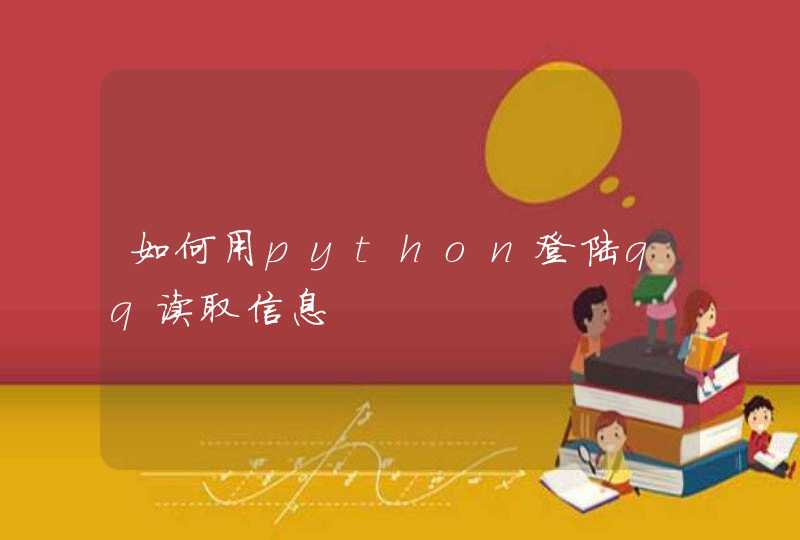
功 能: 异常终止一个进程
用 法: void abort(void)
程序例:
#include <stdio.h>
#include <stdlib.h>
int main(void)
{
printf("Calling abort()\n")
abort()
return 0/* This is never reached */
}
函数名: abs
功 能: 求整数的绝对值
用 法: int abs(int i)
程序例:
#include <stdio.h>
#include <math.h>
int main(void)
{
int number = -1234
printf("number: %d absolute value: %d\n", number, abs(number))
return 0
}
函数名: absread, abswirte
功 能: 绝对磁盘扇区读、写数据
用 法: int absread(int drive, int nsects, int sectno, void *buffer)
int abswrite(int drive, int nsects, in tsectno, void *buffer)
程序例:
/* absread example */
#include <stdio.h>
#include <conio.h>
#include <process.h>
#include <dos.h>
int main(void)
{
int i, strt, ch_out, sector
char buf[512]
printf("Insert a diskette into drive A and press any key\n")
getch()
sector = 0
if (absread(0, 1, sector, &buf) != 0)
{
perror("Disk problem")
exit(1)
}
printf("Read OK\n")
strt = 3
for (i=0i<80i++)
{
ch_out = buf[strt+i]
putchar(ch_out)
}
printf("\n")
return(0)
}
函数名: access
功 能: 确定文件的访问权限
用 法: int access(const char *filename, int amode)
程序例:
#include <stdio.h>
#include <io.h>
int file_exists(char *filename)
int main(void)
{
printf("Does NOTEXIST.FIL exist: %s\n",
file_exists("NOTEXISTS.FIL") ? "YES" : "NO")
return 0
}
int file_exists(char *filename)
{
return (access(filename, 0) == 0)
}
函数名: acos
功 能: 反余弦函数
用 法: double acos(double x)
程序例:
#include <stdio.h>
#include <math.h>
int main(void)
{
double result
double x = 0.5
result = acos(x)
printf("The arc cosine of %lf is %lf\n", x, result)
return 0
}
函数名: allocmem
功 能: 分配DOS存储段
用 法: int allocmem(unsigned size, unsigned *seg)
程序例:
#include <dos.h>
#include <alloc.h>
#include <stdio.h>
int main(void)
{
unsigned int size, segp
int stat
size = 64/* (64 x 16) = 1024 bytes */
stat = allocmem(size, &segp)
if (stat == -1)
printf("Allocated memory at segment: %x\n", segp)
else
printf("Failed: maximum number of paragraphs available is %u\n",
stat)
return 0
}
函数名: arc
功 能: 画一弧线
用 法: void far arc(int x, int y, int stangle, int endangle, int radius)
程序例:
#include <graphics.h>
#include <stdlib.h>
#include <stdio.h>
#include <conio.h>
int main(void)
{
/* request auto detection */
int gdriver = DETECT, gmode, errorcode
int midx, midy
int stangle = 45, endangle = 135
int radius = 100
/* initialize graphics and local variables */
initgraph(&gdriver, &gmode, "")
/* read result of initialization */
errorcode = graphresult() /* an error occurred */
if (errorcode != grOk)
{
printf("Graphics error: %s\n", grapherrormsg(errorcode))
printf("Press any key to halt:")
getch()
exit(1) /* terminate with an error code */
}
midx = getmaxx() / 2
midy = getmaxy() / 2
setcolor(getmaxcolor())
/* draw arc */
arc(midx, midy, stangle, endangle, radius)
/* clean up */
getch()
closegraph()
return 0
}
函数名: asctime
功 能: 转换日期和时间为ASCII码
用 法: char *asctime(const struct tm *tblock)
程序例:
#include <stdio.h>
#include <string.h>
#include <time.h>
int main(void)
{
struct tm t
char str[80]
/* sample loading of tm structure */
t.tm_sec= 1 /* Seconds */
t.tm_min= 30/* Minutes */
t.tm_hour = 9 /* Hour */
t.tm_mday = 22/* Day of the Month */
t.tm_mon= 11/* Month */
t.tm_year = 56/* Year - does not include century */
t.tm_wday = 4 /* Day of the week */
t.tm_yday = 0 /* Does not show in asctime */
t.tm_isdst = 0 /* Is Daylight SavTimedoes not show in asctime */
/* converts structure to null terminated
string */
strcpy(str, asctime(&t))
printf("%s\n", str)
return 0
}
函数名: asin
功 能: 反正弦函数
用 法: double asin(double x)
程序例:
#include <stdio.h>
#include <math.h>
int main(void)
{
double result
double x = 0.5
result = asin(x)
printf("The arc sin of %lf is %lf\n", x, result)
return(0)
}
函数名: assert
功 能: 测试一个条件并可能使程序终止
用 法: void assert(int test)
程序例:
#include <assert.h>
#include <stdio.h>
#include <stdlib.h>
struct ITEM {
int key
int value
}
/* add item to list, make sure list is not null */
void additem(struct ITEM *itemptr) {
assert(itemptr != NULL)
/* add item to list */
}
int main(void)
{
additem(NULL)
return 0
}
函数名: atan
功 能: 反正切函数
用 法: double atan(double x)
程序例:
#include <stdio.h>
#include <math.h>
int main(void)
{
double result
double x = 0.5
result = atan(x)
printf("The arc tangent of %lf is %lf\n", x, result)
return(0)
}
函数名: atan2
功 能: 计算Y/X的反正切值
用 法: double atan2(double y, double x)
程序例:
#include <stdio.h>
#include <math.h>
int main(void)
{
double result
double x = 90.0, y = 45.0
result = atan2(y, x)
printf("The arc tangent ratio of %lf is %lf\n", (y / x), result)
return 0
}
函数名: atexit
功 能: 注册终止函数
用 法: int atexit(atexit_t func)
程序例:
#include <stdio.h>
#include <stdlib.h>
void exit_fn1(void)
{
printf("Exit function #1 called\n")
}
void exit_fn2(void)
{
printf("Exit function #2 called\n")
}
int main(void)
{
/* post exit function #1 */
atexit(exit_fn1)
/* post exit function #2 */
atexit(exit_fn2)
return 0
}
函数名: atof
功 能: 把字符串转换成浮点数
用 法: double atof(const char *nptr)
程序例:
#include <stdlib.h>
#include <stdio.h>
int main(void)
{
float f
char *str = "12345.67"
f = atof(str)
printf("string = %s float = %f\n", str, f)
return 0
}
函数名: atoi
功 能: 把字符串转换成长整型数
用 法: int atoi(const char *nptr)
程序例:
#include <stdlib.h>
#include <stdio.h>
int main(void)
{
int n
char *str = "12345.67"
n = atoi(str)
printf("string = %s integer = %d\n", str, n)
return 0
}
函数名: atol
功 能: 把字符串转换成长整型数
用 法: long atol(const char *nptr)
程序例:
#include <stdlib.h>
#include <stdio.h>
int main(void)
{
long l
char *str = "98765432"
l = atol(lstr)
printf("string = %s integer = %ld\n", str, l)
return(0)
}
复制#include
"stdio.h"
{char
s1[]="abcde",s2[]="scasasa"
strcpy(s1,s2)
如果s2长度大于s1则会覆盖掉
如果小于的话只是将s2的\0放在s1中\0的前面罢了,而后面处理字符串的函数是遇到\0就收手
函数名:
strncpy
功
能:
串拷贝
用
法:
char
*strncpy(char
*destin,
char
*source,
int
maxlen)
程序例:
#include
#include
int
main(void)
{
char
string[10]
char
*str1
=
"abcdefghi"
strncpy(string,
str1,
3)
string[3]
=
'\0'
printf("%s\n",
string)
return
0
}
函数名:
remove
功
能:
删除一个文件
用
法:
int
remove(char
*filename)
程序例:
#include
int
main(void)
{
char
file[80]
/*
prompt
for
file
name
to
delete
*/
printf("file
to
delete:
")
gets(file)
/*
delete
the
file
*/
if
(remove(file)
==
0)
printf("removed
%s.\n",file)
else
perror("remove")
return
0
}
函数名:
rename
功
能:
重命名文件
用
法:
int
rename(char
*oldname,
char
*newname)
程序例:
#include
int
main(void)
{
char
oldname[80],
newname[80]
/*
prompt
for
file
to
rename
and
new
name
*/
printf("file
to
rename:
")
gets(oldname)
printf("new
name:
")
gets(newname)
/*
rename
the
file
*/
if
(rename(oldname,
newname)
==
0)
printf("renamed
%s
to
%s.\n",
oldname,
newname)
else
perror("rename")
return
0
}




































































